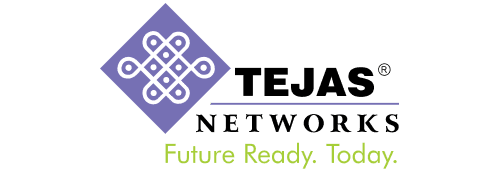In the ever-evolving tapestry of modern business, e-commerce stands as a transformative force, reshaping how we buy and sell in a digital age. As the heartbeat of online transactions, its significance cannot be overstated. Today’s entrepreneurs recognize the imperative of not just participating in e-commerce but excelling within it. This blog embarks on a journey beyond the basics, exploring the pivotal role of e-commerce in contemporary business landscapes and uncovering the crucial strategies for growth and sustained success. At the heart of this exploration lies Shopify Basic, a stepping stone for many budding e-commerce ventures. Yet, as we delve deeper, we’ll unravel the layers beyond this foundational platform, discovering the keys to elevate your e-commerce store to new heights. Welcome to a dominion where scaling is not just a choice but a necessity for those aspiring to thrive in the competitive world of digital commerce.
The Evolution of E-Commerce: Why Start with Shopify Basic

In the developing arena of e-commerce, the journey often begins with a platform that not only sets the stage for growth but also caters to the unique needs of small and budding businesses. Shopify Basic emerges as a beacon for entrepreneurs venturing into the digital marketplace, offering a strategic entry point that aligns with the aspirations of the novice and the ambitions of the visionary.
At the core of Shopify Basic’s appeal is its dedication to simplicity, a trait that proves invaluable for those taking their first steps in the e-commerce domain. For small businesses navigating the intricacies of online retail, a user-friendly platform can make all the difference. Shopify Basic stands out by providing an intuitive interface, enabling entrepreneurs to swiftly navigate the complexities of setting up an online store without the need for extensive technical expertise.
Beyond simplicity, Shopify Basic acts as a launchpad for businesses by offering a collection of ready-made templates that streamline the website design process. Streamlining the process not only saves time but also ensures a professional appearance, crucial for gaining trust and capturing online shoppers’ attention. Entrepreneurs can effortlessly create a compelling online presence with a straightforward setup and customizable templates. Moreover, Shopify takes care of servers and infrastructure complexity, relieving store owners from the stress of maintenance.
A notable advantage of Shopify Basic lies in its role as a testing ground for budding e-commerce ventures. Entrepreneurs can leverage the platform to experiment with products, refine their market approach, and gather crucial insights into consumer behaviour. This feature is particularly beneficial for those in the early stages of their business journey, allowing them to iterate and adapt before committing to larger-scale operations. In essence, Shopify Basic serves as more than just a starting point; it is a strategic foundation that empowers entrepreneurs to not only dip their toes into e-commerce waters but also to chart a course for sustainable growth and success.
Challenges in Staying Basic: Limitations of Shopify Basic
Navigating Growth: Limitations of Shopify Basic
As businesses aspire to expand and evolve in the dynamic landscape of e-commerce, Shopify Basic, while an excellent starting point, reveals its constraints. As the heartbeat of burgeoning enterprises, Shopify Basic may soon find itself stretched to its limits. One notable limitation lies in the platform’s scalability. As businesses experience growth, the basic version can face constraints in handling an increasing volume of products, traffic, and complex operations. Customization options may also become restrictive, hindering the realization of a brand’s unique identity. These challenges, while inherent to the simplicity of the basic package, prompt businesses to consider the next step in their e-commerce journey, seeking solutions that align with their burgeoning ambitions.
Striking the Balance: Navigating Customization, Scalability, and Branding Challenges in Shopify Basic
As businesses leverage the capabilities of Shopify Basic for their entry into the e-commerce realm, they face challenges related to customization, scalability, and branding. While Shopify Basic provides a straightforward entry into the digital marketplace, its simplicity can pose a dual challenge for small-medium businesses aiming to differentiate themselves and facilitate expansion. With the expansion of a startup, it often acquires various plugins to meet evolving needs, each requiring separate subscriptions. However, this approach can result in a lack of synchronization among services, leading to confusion and hindering the brand’s ability to scale and address new custom requirements over time.
One prominent concern is the area of customization. While the platform provides an array of templates, the scope for tailoring the website to unique brand aesthetics may be limiting. As businesses mature, the need for a distinct online identity grows, and the constraints of Shopify Basic may pose a hurdle in fully realizing that vision.
Scalability emerges as another challenge in the trajectory of growth. Shopify Basic may initially suffice for startups, but as product catalogues expand and website traffic surges, businesses may find the platform straining to accommodate the increased demands. The limitations in handling a burgeoning enterprise’s intricacies become apparent, urging businesses to explore more robust solutions.
The delicate dance of balancing simplicity with the complexities of branding is palpable. While Shopify Basic serves as an excellent initiation, the challenge lies in transcending the generic and crafting a brand narrative that resonates with a broader audience. As businesses confront these issues, the transition from Shopify Basic becomes not just a consideration but a strategic imperative, fostering an evolution that aligns seamlessly with their growing ambitions.
A Closer Look Through Case Studies
In the dynamic landscape of e-commerce, businesses embracing Shopify Basic often encounter challenges that prompt a strategic re-evaluation of their digital infrastructure. Real-world examples illustrate the hurdles faced by enterprises sticking with the basics.
Aje

Aje, is a premium Australian fashion house dedicated to raw beauty, tough femininity, and effortless cool, attracting a growing following of dedicated customers around the world. It turned to Shopify Plus to bring its in-store experience online, and offer the same luxurious feel enjoyed by customers offline across its digital channels. They then migrated to Shopify Plus, which provided them with increase conversion rate by 135% in just a few weeks, reduce bounce rate, and increase pages per session and average session duration.
Warby Parker

Warby Parker, the popular eyewear brand, decided to move away from Shopify and create their own custom e-commerce platform. They made this decision because they wanted to have more control and flexibility over their online store. By building their own platform, they were able to tailor it specifically to their needs and provide a unique shopping experience for their customers. When Warby Parker decided to create their own custom ecommerce platform, one of the key factors they focused on was enhancing the user experience. By having full control over their platform, they were able to design it in a way that prioritized simplicity, ease of use, and seamless navigation. They could implement features that specifically catered to their customers’ needs, such as virtual try-on tools or personalized recommendations based on individual preferences. This level of customization allowed for a more engaging and personalized shopping experience, making it easier for customers to find the perfect pair of glasses. Overall, by moving away from Shopify and building their own platform, Warby Parker was able to create a user experience that truly reflected their brand and vision.
These case studies underscore the nuanced challenges that businesses confront when sticking with Shopify Basic, emphasizing the importance of strategic evolution in the pursuit of sustained e-commerce excellence.
The Need for Scaling: When to Move Beyond Shopify Basic
E-commerce businesses often reach a tipping point where the simplicity of Shopify Basic, while foundational, begins to feel constraining. Increased website traffic is not just a metric of success but a harbinger of evolving needs. As businesses witness a surge in visitors, they find themselves grappling with the basic platform’s limitations in handling the intensified demands. The transition to a more scalable solution becomes imperative, ensuring that the website not only withstands the influx but continues to provide a smooth, uninterrupted experience for users.
Sales growth acts as a compass guiding businesses on their path to scalability. When the volume of transactions outgrows the capacity of Shopify Basic, businesses are confronted with the reality that their success is surpassing the platform’s foundational capabilities. Advanced features and functionalities become more than just a desire; they become a necessity to sustain and amplify this growth trajectory. Recognizing these signals allows businesses to make a strategic pivot, seamlessly transitioning to a more advanced e-commerce framework that aligns with their burgeoning needs.
Beyond addressing constraints, scaling introduces a realm of possibilities to enhance the overall user experience. Advanced platforms offer greater flexibility in design, allowing businesses to craft a unique and immersive online presence that resonates with their brand identity. The incorporation of advanced features, such as personalized recommendations, streamlined checkout processes, and robust inventory management, transforms the user journey into a more engaging and efficient experience. Scaling is not merely a response to limitations; it is an investment in the future of the business, propelling it towards a new echelon of e-commerce excellence.
Options for Scaling: Beyond Shopify Basic
As businesses outgrow Shopify Basic and advance to the next stage of scaling, they explore a range of diverse e-commerce platforms to meet their expanding requirements. Options such as Shopify Plus, WooCommerce, and Magento and custom e-commerce solutions like Ektie, a headless e-commerce solution designed to help businesses with digital transformation emerge as formidable contenders in this landscape.
Shopify Plus extends the capabilities of the basic version, offering robust features designed for high-growth businesses. It provides advanced customization options, scalability to handle increased traffic, and dedicated support to navigate the complexities of a thriving online enterprise. In addition to customization and scalability, Shopify Plus introduces the concept of “headless” commerce, allowing businesses to decouple the front-end and back-end of their online stores. This headless architecture provides unparalleled flexibility, enabling businesses to develop e-commerce experiences with any custom design or requirement they envision. By separating the presentation layer from the e-commerce engine, businesses gain the freedom to create unique online experiences that perfectly match their brand image and cater to specific user needs.
As a WordPress plugin, WooCommerce seamlessly integrates with existing websites, offering a powerful and flexible solution. It stands out for its open-source nature, allowing businesses to tailor their online stores extensively. With a vast library of extensions, WooCommerce provides versatility for businesses seeking a tailored e-commerce experience.
Renowned for its scalability and flexibility, Magento caters to businesses with intricate requirements. Whether managing a large product catalogue or orchestrating complex e-commerce operations, Magento offers a robust infrastructure. Its open-source architecture empowers businesses to customize every aspect of their online presence.
Ektie’s headless architecture empowers businesses to create and deploy their e-commerce solutions without limitations. This flexibility enables the crafting of a user interface that precisely aligns with design requirements, while the back-end processes seamlessly manage transactions, inventory, and other essential functionalities. It also incorporates powerful business process automation capabilities, encompassing the automation of repetitive tasks, order processing, inventory management, and various operational workflows. These automation features streamline business processes, diminish the need for manual intervention, and significantly improve overall efficiency.
These platforms present many features and benefits that distinguish them from Shopify Basic. Enhanced customization options allow businesses to shape their online identity more precisely, ensuring a unique brand representation. The scalability of these alternatives transcends the constraints of the basic framework, accommodating increased traffic and transaction volumes seamlessly. Whether through advanced analytics, personalized customer experiences, or extensive integrations, these e-commerce platforms provide the toolkit for businesses to not only scale but thrive in the competitive digital landscape.
Best Practices for Transitioning: Making the Leap to Advanced Platforms
Step-by-Step Guide for Migration
Assessment and Planning
- Begin by conducting a thorough assessment of your current Shopify Basic setup. Identify key data, functionalities, and customizations that need to be transferred to the new platform.
- Plan the migration process meticulously, outlining specific goals and timelines to ensure a smooth transition.
Choose the Right Platform
- Research and select the advanced e-commerce platform that aligns with your business needs and growth objectives. Consider factors such as scalability, customization options, and support services.
Data Backup
- Before migration, perform a comprehensive backup of your data. This ensures that in the event of any unforeseen issues, you can revert to a stable state without significant data loss.
Migration Execution
- Initiate the migration process, transferring data, product information, customer details, and other essential elements to the new platform. Follow the platform-specific guidelines for a seamless transition.
Testing and Quality Assurance
- Thoroughly test the migrated website to identify and address any issues. Pay close attention to functionalities, user experience, and data accuracy. Conduct multiple rounds of testing to ensure a bug-free launch.
Challenges and Solutions: Overcoming Hurdles in Scaling
Common Challenges in Scaling
Data Migration Complexities
Businesses often face challenges in migrating vast amounts of data seamlessly from Shopify Basic to an advanced platform. This includes product information, customer data, and order history, which can be intricate and prone to errors.
SEO Disruptions
The transition may disrupt existing SEO rankings, leading to potential drops in organic traffic. Maintaining SEO integrity during the migration is a critical concern for businesses aiming to sustain their online visibility.
User Experience Disruptions
Ensuring a seamless user experience during the transition is challenging. Any glitches, downtime, or inconsistencies in the shopping process can lead to customer dissatisfaction and impact the brand’s reputation.
Practical Solutions and Strategies
Thorough Planning and Testing
A comprehensive plan, including a meticulous assessment of data migration requirements and SEO preservation, is essential. Rigorous testing at each stage of the transition helps identify and address potential issues before they impact the live website.
Engage Professional Support
Collaborating with e-commerce migration specialists or hiring professionals with experience in transitioning between platforms can streamline the process. Their expertise ensures a smoother migration, reducing the likelihood of errors.
Implement SEO Best Practices
Implement SEO best practices during and after the migration to minimize disruptions. Utilize 301 redirects effectively, update sitemaps, and conduct regular SEO audits to monitor and address any issues that may arise.
Managing the Transition Effectively
Communication and Customer Education
Transparent communication with customers about upcoming changes and potential disruptions is crucial. Providing clear instructions, updates, and support during the transition fosters trust and minimizes the impact on the customer experience.
Risk Mitigation and Contingency Plans
Developing contingency plans for potential risks, such as data discrepancies or unexpected downtime, is prudent. Having a well-defined risk mitigation strategy ensures that the business can respond promptly to unforeseen challenges.
Post-Migration Monitoring
After the transition, continuous monitoring of website performance, user feedback, and key metrics is vital. This proactive approach allows businesses to identify and address any lingering issues, ensuring a stable and optimized online presence.
Conclusion
In conclusion, the journey from Shopify Basic to advanced e-commerce platforms is a strategic evolution that unlocks unparalleled opportunities for businesses. The key takeaways underscore the critical role of scaling in achieving e-commerce excellence. Businesses must recognize the signs of outgrowing Shopify Basic, navigating challenges with foresight, and embracing the transformative potential of platforms like Shopify Plus, WooCommerce, or Magento.
As businesses evaluate their growth stages, the path to scaling becomes a defining choice. The scalability, customization options, and enhanced features offered by advanced platforms are instrumental in propelling businesses toward sustained success. It’s not just a transition; it’s a strategic leap that empowers businesses to exceed customer expectations, increase sales, and craft a unique online identity.
In the dynamic world of e-commerce, the potential for success beyond Shopify Basic is limitless. Embrace the journey with confidence, knowing that the challenges of scaling are surmountable with careful planning and execution.












